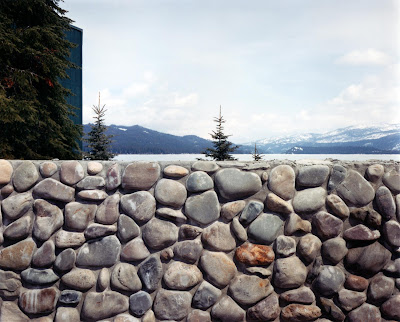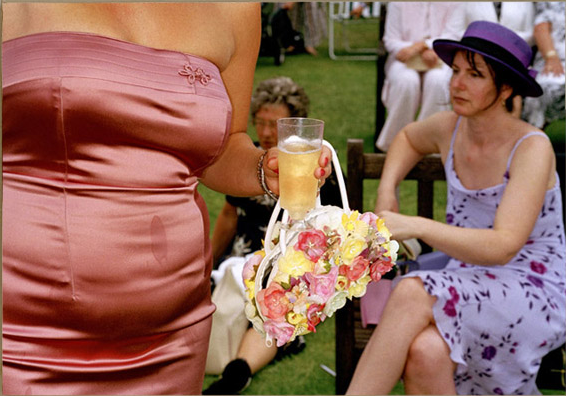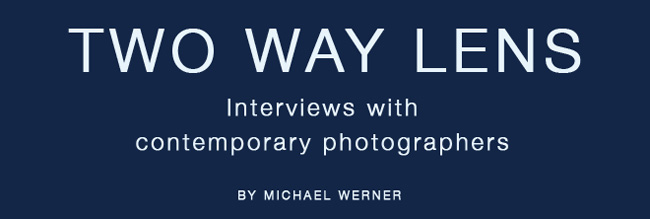MW
What inspired you to start taking photographs, and what is the primary inspiration for you to keep working in this field?RJ
It’s sort of fuzzy in terms of when I transitioned from being a photographer (as everybody is), to being a Photographer. I got my first instamatic camera when I was about ten years old, and my first 35mm when I was 16, but I didn’t take any art classes in photography until I was in college. As is the case with a lot of students of photography, my interest in my photo classes was peripheral to my main focus of study, which was philosophy. I was a junior in college when I figured out that my concerns in photography and my concerns in philosophy were beginning to merge, and that I enjoyed making pictures more than writing. (The medium of photography presents such a natural epistemological conundrum.) So, I guess the short answer to that question is that photography’s unique ability to simultaneously inform and misdirect us is what inspired me to start taking photographs in a serious way. It’s a medium that never fails to baffle me, which is why I still find it fascinating. The fact that I can never figure it out is what keeps me engaged and working.
MW
In your opinion and experience, how can emerging photographers evaluate themselves as ready to start promoting their works and seek broader exposure for their photographs? What is one vital action you would recommend photographers undertake to find their audience, be included in exhibitions, and gain professional representation?RJ
This is a tricky question that has numerous valid answers. On the one hand, I could say that nobody’s work is ever completely ready and fully developed, so go ahead and start promoting your work as soon as you have the desire to show it to an audience. Make your professional mistakes with your early work, rather than screwing things up with photographs that really deserve to be seen. On the other hand, you don’t want to put people off by being too forceful and blindly ambitious with unfocused, undeveloped work that doesn’t merit their attention. (How’s that for avoiding the question?)
I think the best thing a young artist can do is to seek feedback and advice from other photographers, particularly those who have already established decent careers for themselves. The best critiques and professional guidance I ever received came from photographers, not curators or publishers, and certainly not gallerists. I think you can establish a pretty firm sense of whether you’re “ready” or not by the feedback you get from established photographers. It’s also important to have two or three peers whose advice you really trust. These should be photographers (or writers, or painters…) with whom you share camaraderie, and whose feedback you can seek on a moment’s notice. These are the people who will help you determine if you’re ready to show your work to curators or publishers. You should never work in a vacuum.
That said, I think young artists should take great care in terms of how they go about seeking guidance and advice from established photographers. When I was just starting out, we didn’t have the internet, so if I wanted to meet someone whose work I respected and show them my photographs, I had to call them, introduce myself, and, being respectful of their time, arrange a studio visit. (Their studio, not mine. I once rode a train for 24-hours from New Orleans to Washington D.C. for a one-hour studio visit with a photographer. This brief exchange was profoundly important to my development as an artist.) I see too many young artists using the shotgun approach, e-mailing artists and publishers whose work is totally irrelevant to what they’re doing, and hoping something will pan-out. This, in my opinion, is not the way to go about it. Go to the trouble of actually speaking to people, preferably in person. It’s a much better way of establishing a meaningful and lasting conversation about what you’re doing with photography.
Commercial representation is still a bit of a mystery to me. Gallerists are extremely fickle, and a little pre-validation goes a long way in terms of getting your foot in the door. Getting those first few shows and publications can be the toughest. This is where knowing a few established artists can help. Getting an introduction from someone who’s already represented at a gallery can make things easier. (That said, your goal in meeting established artists should never be to simply use them to get an introduction to their gallery. You should happily accept an offer for an introduction, but it’s bad form to ask for one.) Beyond that, I think the main thing about seeking representation is to make sure you’re targeting the right galleries. Do your homework. Visit a lot of galleries, go to openings, and have a clear sense that your work is appropriate for what their program is and who their clients are. And have patience. The art world can seem like a cruel place when you’re first starting out (or twenty years later, for that matter). Be prepared for closed doors and a fair share of indifference to your work, but don’t internalize it. Just go back a few times, and if that doesn’t work, move on to the next gallery. In the meantime, don’t stop trying to get your work seen in other settings like art centers and even alternative spaces. Build up momentum with what you’re doing. This will give you a sense of purpose and the edge of professionalism that you won’t have if you just hang around waiting for a gallery to represent you.
MW
How did it come about that you achieved the status of successful, professional photographer? What steps were involved in reaching your level of success?RJ
I guess the idea of “success” is relative. I’m in my 40s, and I’ve been a working photographer for about twenty years and I’m still seen by many as an “emerging” artist. (I must have receded a few times.) I think there are many routes to success, and different levels of success. From a pragmatic standpoint, the success on my résumé has come from setting simple goals for myself with each body of work. Gallery shows, museum shows, and magazine and book publishing are all a part of the mix, depending on where my interests are at any given moment. (Right now, for instance, I’m more interested in book publishing than exhibitions. A person with real ambition would tell you to do both!) Doing the work is always the main priority, but finding the appropriate audience for it is just as important. For me, that part is a constant struggle. I’ve done pretty well career-wise, but I’ve never had that magical moment where suddenly everything changed for me and people were knocking on my door, wanting to work with me. It’s gotten easier the more I’ve done, but it’s still hard work in terms of getting my work out there. You have to believe that what you’re doing is important enough to show to an audience and maintain that belief despite the inevitable setbacks. As long as you continue to be interested in photography in a way that goes beyond having a glorified hobby, you will, by necessity, continue to seek an audience.
The way I’ve sustained my uniquely meandering level of success has been to maintain a sense of why I decided to pursue photography seriously in the first place. The medium of photography is maddingly limited in terms of how it communicates things, and in this limitation I find everything I love about it. I like what happens when you take a picture of something—the strange, indexical, yet fully fictional transformation that occurs. It’s an incomplete, visual form of muttering, and it’s perfect in that sense.

Brundage Mtn., ID 1998

Shore Lodge, McCall, ID 1998

Yellowpine, ID 1997

Mountain Cabin, Lick Creek Road 1998

Lakeside Home 1998

Untitled. From Alpine Star 2006

Untitled. From Alpine Star 2006

Untitled. From Alpine Star 2006

Untitled. From Alpine Star 2006
© all images Ron Jude
 from the series Luxury
from the series Luxury from the series Luxury
from the series Luxury from the series Luxury
from the series Luxury from the series Playas
from the series Playas from the series Playas
from the series Playas from the series Playas
from the series Playas from the series Melbourne Cup
from the series Melbourne Cup from the series Melbourne Cup
from the series Melbourne Cup from the series Melbourne Cup
from the series Melbourne Cup








